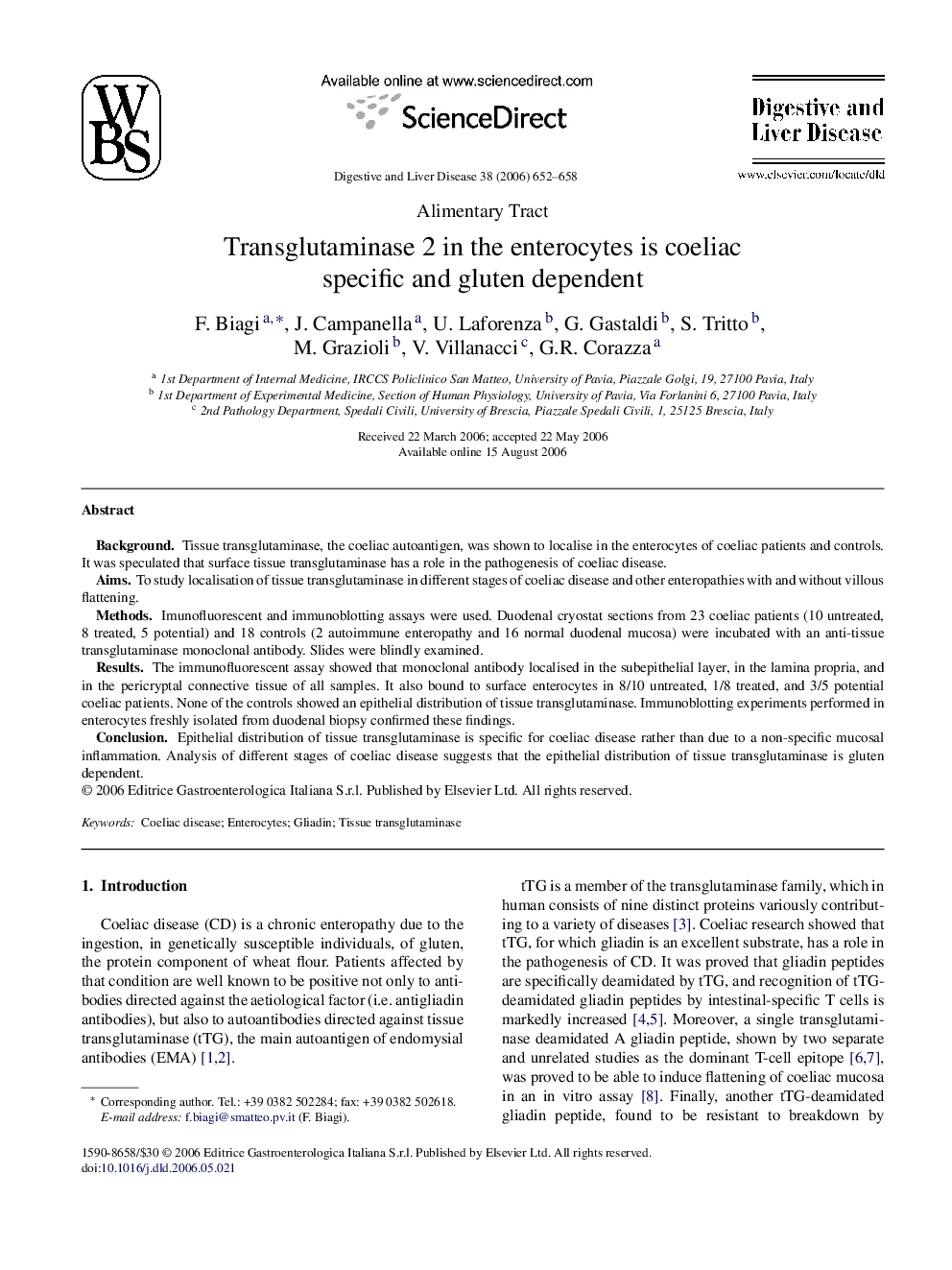| Article ID | Journal | Published Year | Pages | File Type |
|---|---|---|---|---|
| 3265127 | Digestive and Liver Disease | 2006 | 7 Pages |
BackgroundTissue transglutaminase, the coeliac autoantigen, was shown to localise in the enterocytes of coeliac patients and controls. It was speculated that surface tissue transglutaminase has a role in the pathogenesis of coeliac disease.AimsTo study localisation of tissue transglutaminase in different stages of coeliac disease and other enteropathies with and without villous flattening.MethodsImunofluorescent and immunoblotting assays were used. Duodenal cryostat sections from 23 coeliac patients (10 untreated, 8 treated, 5 potential) and 18 controls (2 autoimmune enteropathy and 16 normal duodenal mucosa) were incubated with an anti-tissue transglutaminase monoclonal antibody. Slides were blindly examined.ResultsThe immunofluorescent assay showed that monoclonal antibody localised in the subepithelial layer, in the lamina propria, and in the pericryptal connective tissue of all samples. It also bound to surface enterocytes in 8/10 untreated, 1/8 treated, and 3/5 potential coeliac patients. None of the controls showed an epithelial distribution of tissue transglutaminase. Immunoblotting experiments performed in enterocytes freshly isolated from duodenal biopsy confirmed these findings.ConclusionEpithelial distribution of tissue transglutaminase is specific for coeliac disease rather than due to a non-specific mucosal inflammation. Analysis of different stages of coeliac disease suggests that the epithelial distribution of tissue transglutaminase is gluten dependent.
